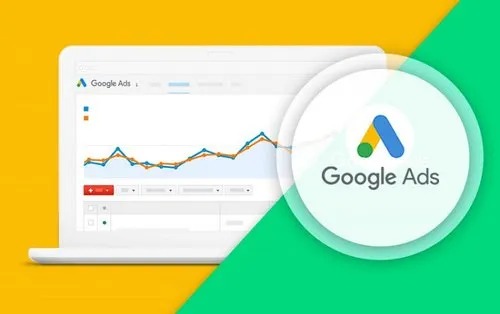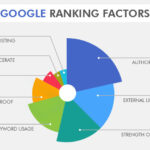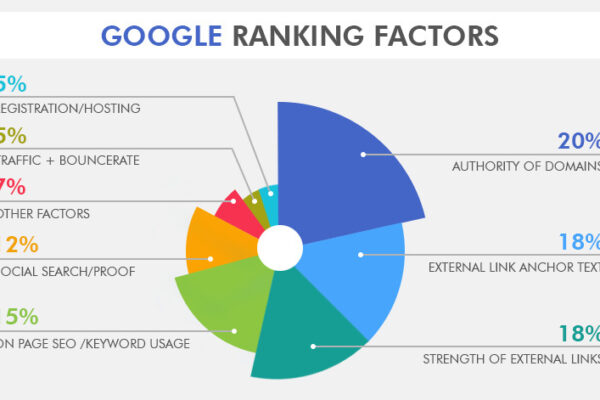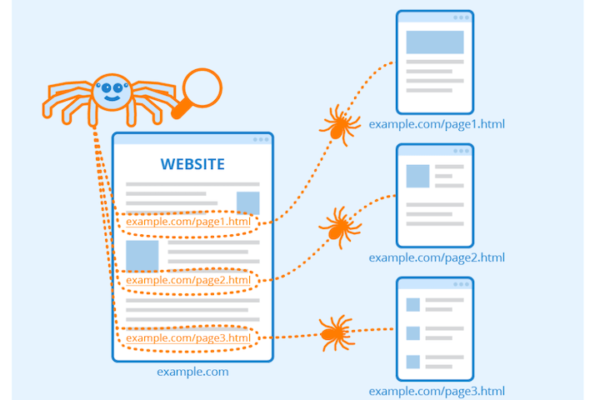Everything You Need To Know About Google Ads’ Auction System
Google Ads’ auction system determines which ads appear and their placement in search results based on a combination of bid amount, ad quality, and the expected impact of ad extensions. Every time a user searches on Google, an auction runs instantly to select the best ads to show. Advertisers set a maximum bid, but a high bid alone doesn’t guarantee a top position; ad quality, relevance, and expected click-through rate are equally crucial. This approach ensures that users see relevant ads, while advertisers pay a cost-per-click that’s optimized for their budget and goals.
What is Google Ads’ Auction System?
Google Ads’ auction system is a dynamic process that determines the placement of ads on Google’s search results pages and across its advertising network. When a user conducts a search, Google evaluates all the ads eligible to appear based on the keywords entered. Each advertiser bids on specific keywords, but the highest bid doesn’t automatically secure the top position.
Instead, Google combines the bid amount with a metric called Quality Score, which reflects the relevance of the ad, expected click-through rate, and landing page experience. This combined score, known as Ad Rank, determines ad placement. Therefore, even a lower bid can achieve a higher position if it has a better Quality Score, ensuring that users see ads that are relevant to their search queries. This auction system promotes competition and relevance, benefiting both advertisers and users.
Types of Google Ads Auctions
Google Ads auctions determine how ads are displayed on Google’s search results pages and across the Google Display Network. There are several types of auctions used within Google Ads:
Search Auction:
- This is the most common type of auction where advertisers bid on keywords related to their products or services.
- The auction happens every time a user performs a search query that matches a keyword an advertiser has bid on.
- The ad rank is determined by the bid amount, quality score, and expected impact of extensions and other ad formats.
Display Auction:
- Advertisers can display their ads on websites that are part of the Google Display Network (GDN).
- Ads are shown based on factors like user demographics, interests, and previous browsing behavior.
- Advertisers can choose to pay per impression (CPM) or per click (CPC).
Video Auction:
- This auction type is specific to video ads shown on platforms like YouTube.
- Advertisers can bid on video placements, and ads may be charged based on views (CPV) or impressions.
Shopping Auction:
- Used for Google Shopping ads, where retailers can showcase their products directly in search results.
- The auction considers product data and bids, allowing users to see product images, prices, and merchant information.
App Promotion Auction:
- This auction is for promoting mobile apps across Google Search, YouTube, and the Google Display Network.
- Advertisers can pay for app installs (CPI) or specific actions within the app (CPA).
Discovery Ads Auction:
- Discovery ads are displayed across various Google properties, including the Discover feed, YouTube, and Gmail.
- The auction focuses on targeting users based on their interests and behaviors.
Smart Campaigns:
- Designed for small businesses, Smart Campaigns automate the auction process by optimizing bids and ad placements based on the campaign goals.
- Advertisers provide information about their business, and Google handles the rest.
Performance Max Campaigns:
- A newer campaign type that allows advertisers to run ads across all Google channels (Search, Display, YouTube, etc.) from a single campaign.
- It uses machine learning to optimize ad delivery based on goals and conversions.
How the Google Ads Auction Works
The Google Ads auction determines which ads appear on Google’s search results pages and in what order. Here’s a breakdown of how the auction works:
- Ad Auction Process
- Triggering the Auction: Every time a user performs a search, an auction is triggered. Google considers various factors to determine if an ad should be shown based on the user’s query and the keywords that advertisers have selected.
- Ad Rank
- Components of Ad Rank: The position of your ad in the auction is determined by your Ad Rank, which is calculated using:
- Bid Amount: The maximum amount you’re willing to pay per click.
- Quality Score: A metric based on the relevance of your ad, the expected click-through rate (CTR), and the landing page experience.
- Ad Extensions: Additional information that can enhance your ad’s visibility and relevance, such as phone numbers or links to specific pages.
- Bidding Types
- Manual Bidding: You set the bid amount for each keyword.
- Automated Bidding: Google automatically adjusts bids to maximize conversions based on your budget.
- Ad Selection
- Eligibility: Not all ads that enter the auction are eligible to be displayed. Ads must meet Google’s policies and guidelines.
- Competition: Multiple advertisers may bid on the same keywords, and Google will use Ad Rank to decide which ads to display and in what order.
- Cost Per Click (CPC)
- CPC Calculation: You typically pay less than your maximum bid. The actual CPC is determined by the Ad Rank of the ad below yours divided by your Quality Score, plus a small increment.
- Example: If the next highest Ad Rank is $4 and your Quality Score is 2, your actual CPC would be $4 / 2 + $0.01 = $2.01.
- Ad Placement
- Ads can appear at the top of search results (above organic results) or in the sidebar. The higher your Ad Rank, the better the placement.
- Ongoing Optimization
- Advertisers continuously monitor their campaigns and adjust bids, refine keywords, and improve ad copy and landing pages to enhance their Quality Score and Ad Rank.
Top Tips to Win Google Ads Auctions in 2024
Winning Google Ads auctions in 2024 requires a combination of strategic planning, data analysis, and optimization techniques. Here are some top tips to help you succeed:
- Focus on Quality Score
- Optimize Ad Relevance: Ensure your ads are closely related to the keywords you’re targeting. This increases your Quality Score, which can lower your costs per click (CPC).
- Improve Landing Page Experience: Ensure your landing pages are relevant, load quickly, and provide a good user experience.
- Use Advanced Targeting Options
- Leverage Audience Segmentation: Use Google’s audience targeting features to reach specific demographics or interests. Remarketing lists can help target users who have previously interacted with your site.
- Incorporate Custom Audiences: Create custom audiences based on your customer data to refine targeting further.
- Ad Extensions
- Utilize All Relevant Extensions: Use ad extensions like site links, callouts, and structured snippets to increase the visibility and effectiveness of your ads.
- Test Different Formats: Experiment with various extensions to see which ones yield the best results.
- Optimize Bidding Strategies
- Consider Automated Bidding: Use Google’s automated bidding strategies like Target CPA, Target ROAS, or Maximize Conversions to take advantage of machine learning.
- Adjust Bids Based on Performance: Regularly review and adjust bids for keywords, locations, and devices based on performance data.
- Keyword Research and Management
- Use Long-Tail Keywords: Incorporate long-tail keywords to target niche audiences and reduce competition.
- Regularly Audit Keywords: Review keyword performance regularly and pause or remove underperforming keywords.
- Ad Copy Optimization
- A/B Test Your Ads: Continuously test different headlines and descriptions to find the best-performing ad copy.
- Include Clear Calls-to-Action: Make sure your ads have strong CTAs that encourage users to take action.
- Monitor and Analyze Performance
- Use Analytics Tools: Leverage Google Analytics and Google Ads reports to track performance metrics and make data-driven decisions.
- Adjust Based on Insights: Regularly analyze conversion rates, CTR, and ROI to refine your strategy.
- Stay Updated with Trends
- Follow Industry News: Keep abreast of changes in Google Ads policies, features, and trends to stay ahead of the competition.
- Participate in Training: Consider Google Ads training and certifications to enhance your skills and knowledge.
- Geographic Targeting
- Refine Location Targeting: Analyze which locations convert best and adjust your targeting accordingly.
- Use Location-based Bidding: Increase bids for high-performing areas to maximize visibility.
- Mobile Optimization
- Ensure Mobile Friendliness: Optimize your ads and landing pages for mobile users, as a significant amount of traffic comes from mobile devices.
- Monitor Mobile Performance: Analyze the performance of your ads on mobile and adjust your strategy accordingly.
Factors Influencing Google Ads Auctions
Google Ads auctions determine how ads are displayed in search results and on partner websites. Several key factors influence the outcome of these auctions:
- Bid Amount: Advertisers set a maximum bid for how much they are willing to pay for a click on their ad. Higher bids can increase the chances of winning an auction.
- Quality Score: This is a metric that evaluates the quality and relevance of an ad based on:
- Click-Through Rate (CTR): Historical performance indicating how often people click the ad when it’s shown.
- Ad Relevance: How closely the ad matches the user’s search intent.
- Landing Page Experience: The relevance, transparency, and ease of navigation of the landing page.
- Ad Rank: Google uses Ad Rank to determine the position of an ad in the auction. It is calculated by multiplying the bid amount by the Quality Score. Higher Ad Rank means a better position in search results.
- Ad Extensions: The use of ad extensions (like sitelinks, callouts, and structured snippets) can enhance an ad’s visibility and CTR, positively impacting the Quality Score and overall performance.
- Competitor Actions: The number of competitors bidding on the same keywords can affect auction dynamics. If many advertisers are vying for the same audience, competition can drive up bids.
- User Context: Factors like the user’s location, device type, search history, and time of day can influence which ads are shown. Google aims to display the most relevant ads to each user based on their specific context.
- Keyword Relevance: The relevancy of the chosen keywords to the ad and landing page also impacts both the Quality Score and the likelihood of ad display.
- Historical Performance: Google considers the past performance of ads, including previous CTRs and conversions, which can affect current auctions.
- Budget: Daily budgets can impact the frequency with which ads are shown. If a budget is too low, ads may not appear as often, regardless of the auction outcome.
- Targeting Options: Various targeting settings, such as demographics, interests, and remarketing lists, can refine who sees the ads, influencing overall performance.
















